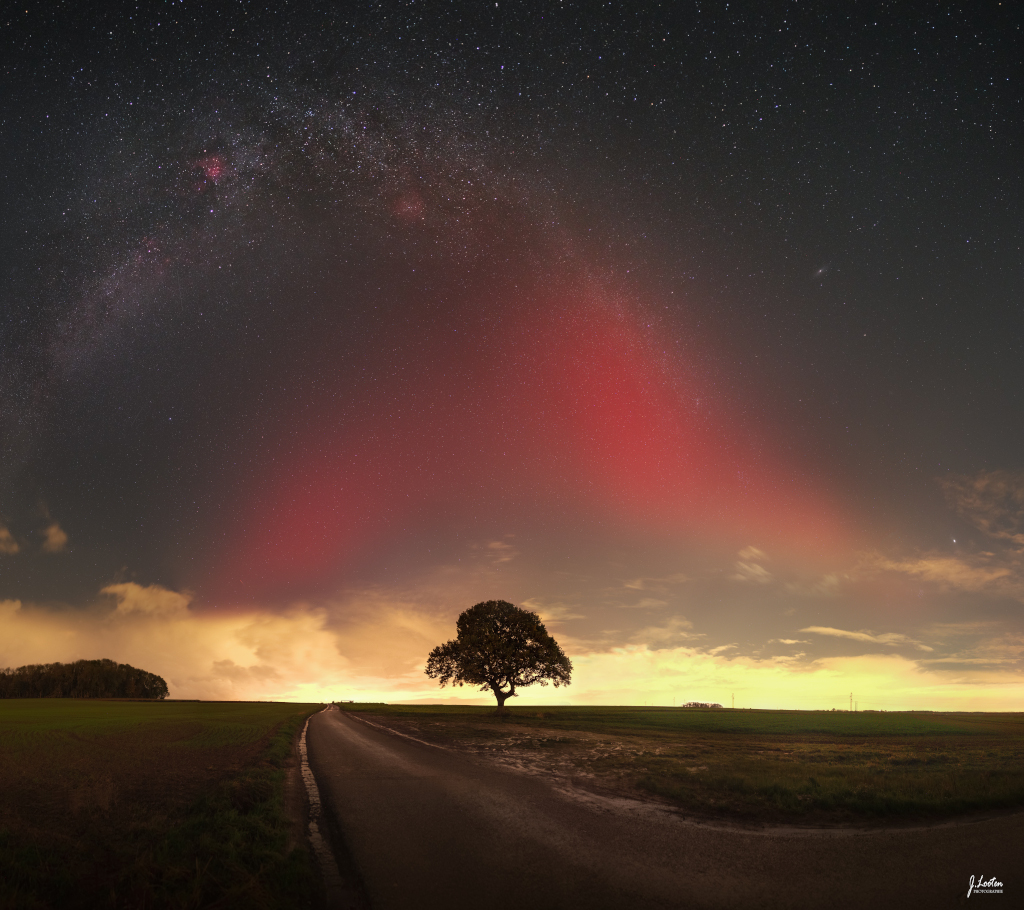2023年11月11日
The SAR and the Milky Way
Image Credit & Copyright: Julien Looten
Explanation: This broad, luminous red arc was a surprising visitor to partly cloudy evening skies over northern France. Captured extending toward the zenith in a west-to-east mosaic of images from November 5, the faint atmospheric ribbon of light is an example of a Stable Auroral Red (SAR) arc. The rare night sky phenomenon was also spotted at unusually low latitudes around world, along with more dynamic auroral displays during an intense geomagnetic storm. SAR arcs and their relation to auroral emission have been explored by citizen science and satellite investigations. From altitudes substantially above the normal auroral glow, the deep red SAR emission is thought to be caused by strong heating due to currents flowing in planet Earth’s inner magnetosphere. Beyond this SAR, the Milky Way arcs above the cloud banks along the horizon, a regular visitor to night skies over northern France.
Tomorrow’s picture: snow day
稳定极光红弧与银河
影像提供与版权: Julien Looten
说明: 这道出现在法国北部多云傍晚天空的宽阔明亮泛红光弧,是令人惊讶的意外访客。这幅摄于11月5日的东西向拼接影像,记录了一例向天顶伸展的暗淡稳定极光红弧(SAR)。这例罕见的夜空现象,出现在地球异常低纬度的地区,同时出现的还有强烈磁暴所触发的较动态极光。稳定极光红弧与极光辐射的关联,经常受到公民科学和卫星 的探索研究。这种出现在远高于寻常极光高度的深红稳定极光弧,咸认是地球大气受到在地球内磁层流动的电流之强烈加热所致。影像中,这例稳定极光红弧的后方,还可见到法国北部夜空的常客、悬在地平线云层上空的弧状银河。 (Stable Auroral Red, SAR 稳定极光红弧)
明日的图片: snow day



